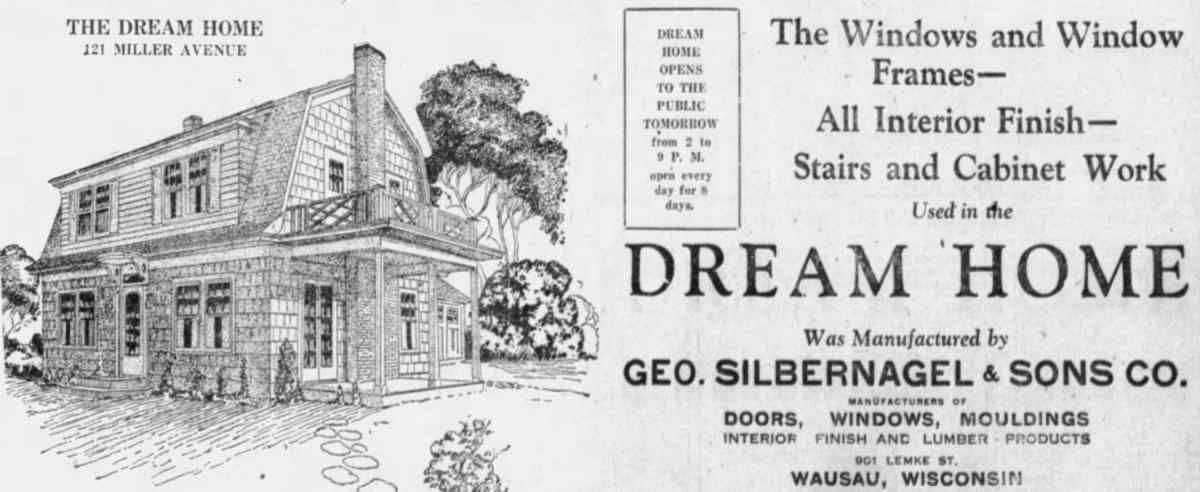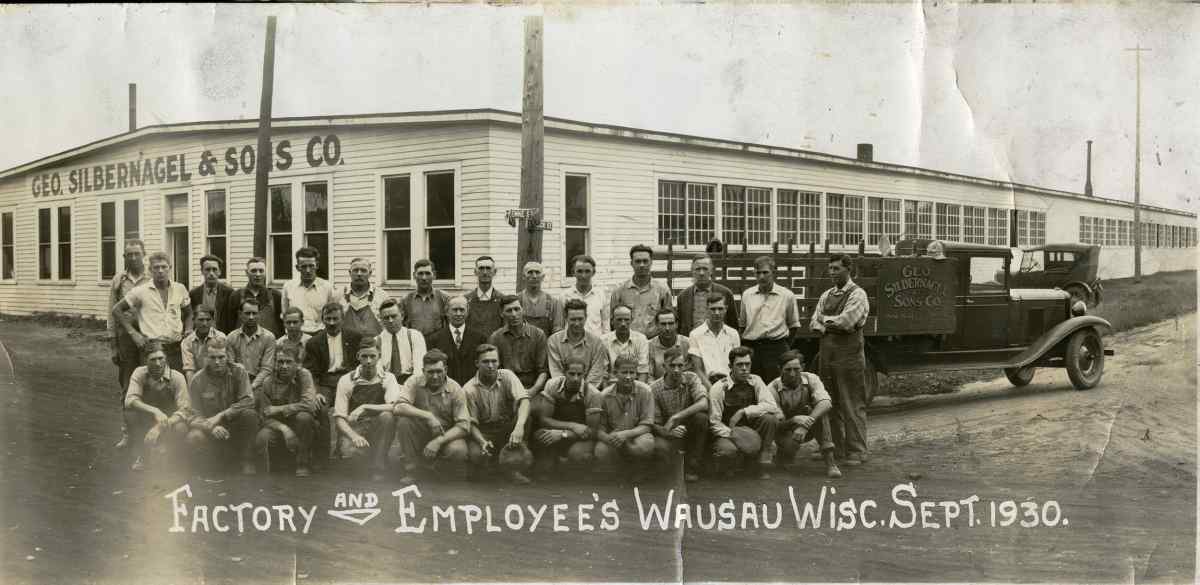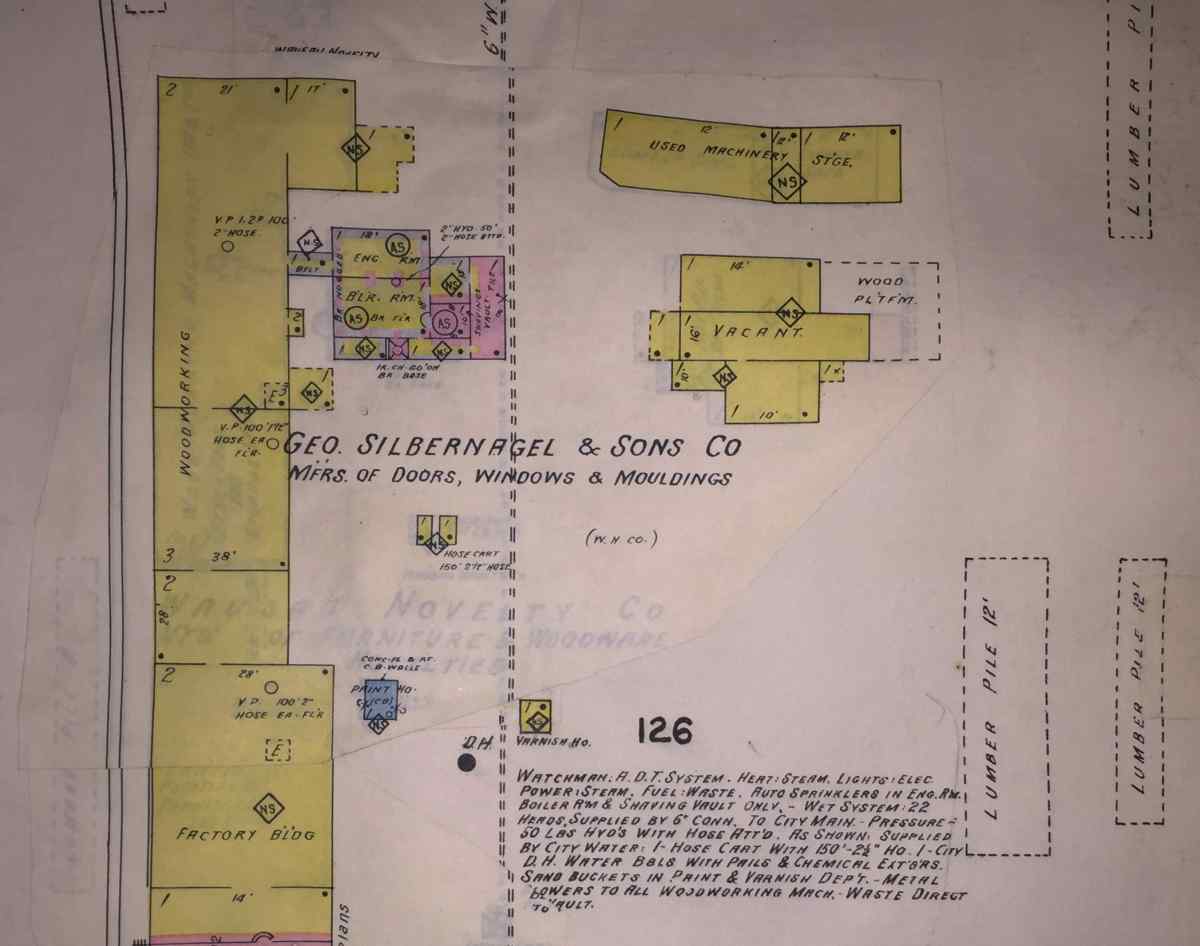George Silbernagel and Sons

George Silbernagel and his Sons
When George Silbernagel was thirteen years old, he began working for the Madison sash and door manufacturer, Silbernagel & Dean (where his father J.J. Silbernagel was a partner). In 1899 he moved to Wausau to work in the industry here, in part to prove he could advance in the business "on his own." He took a job with Curtis Woodworking, and over the next thirteen years, he worked his way to become head of the sales and estimating departments there.

^ George Silbernagel in 1930
In 1912, he joined John Kuebler in establishing the J.M. Kuebler door and sash manufacturing company, after Kuebler purchased the factory from George Werheim in 1911. For the next thirteen years, he served as the secretary and treasurer of the company.
During that time, his two oldest sons, George Jr and Edward had come of age and entered the workforce. Both sons had been sent to Madison to study at the University of Wisconsin (although George Jr. briefly put his education on hold to serve in WWI). After a year working in Madison, George Jr. found a job as secretary for the Marathon Granite Company in Wausau in 1920. Edward took a job in Fort Wayne, Indiana, but would return to Wausau at the invitation of his father.
In 1925, after over a decade working for John Kuebler, Silbernagel decided it was time to set off on his own. Silbernagel sold off his interest in the Kuebler plant, and started his own door and sash company with his sons.
Silbernagel & Sons Co.
A factory was built on Lemke Street in the spring of the following year, and before long the plant was employing up to 70 men in turning out doors and sashes. The roaring twenties provided enough of a building boom to support several sash and door companies in Wausau. And the Silbernagels utilized their business savvy to carve a niche for the new company.

^ In 1927, several Wausau companies came together to build a "Dream Home" to provide "a demonstration of what may be done in modern home planning, electrification and furnishing to create a home of lasting joy, comfort and convenience." Silbernagel and Sons provided the windows, interior finish, and work on cabinets and stairs.
Even as the Great Depression hit and brought the building boom of the 1920s to a halt, the Silbernagels were able to keep the factory running and their employees at work. They even expanded their facilities in 1931.

^ A photo of the employees of the George Silbernagel & Sons plant in 1930, located on Lemke Street.
Silbernagel Burns

^ Headline of the Wausau Daily Herald the morning of the fire that destroyed the Silbernagel factory, from 1 February 1934.
In the morning, the first of February 1934, night watchman Walter Rahn noticed a small fire near one of the boilers in the Silbernagel plant. Later it would be guessed that an errant spark must have started the blaze that quickly spread. Realizing the danger, Rahn tried to run for a chemical fire extinguisher, but a wall of flames chased him, and he was forced to break a window and jump for safety--his clothing still burning from the blaze around him. He managed to crawl to safety, then ran to a nearby home to call the fire department.
By the time the fire department arrived, all they could do was try to keep the fire from spreading. Due to the efforts of the fire department, and lucky winds that pushed the blaze northward along the factory block instead of west or south to the homes and businesses there, the fire was largely contained to the Silbernagel plant.
Within a half hour after the blaze started the block-long factory was reduced to ashes, the dust, shavings and sawdust furnishings ready fodder for the flames.
-"Seventy Men Out Of Work by Blaze; Loss is $70,000" Wausau Record Herald (1 February, 1934) 1, 11.
The cost of the fire would be great. A single freight car was saved from the loading platform, and a number of valuable papers were stored in a fire-proof safe in the office. But the factory, adjoining warehouses, offices, shavings shed, and several freight cars full of finished goods were all destroyed. The lumber shed was partially saved from the blaze, but the large inventory stored was rendered "practically worthless" by the water used to stop the fire from spreading.
In all, the loss was estimated at about $70,000 (or over $1.3 million eighty-five years later adjusted for inflation), which was partially covered by insurance. Walter Rahn, night watchman, was taken to Memorial Hospital for treatment for extensive burns. Herman Sternberg, truck driver for fire station number one, also was sent to the hospital, after he hurt his back falling on the icy street. Both made full recoveries.
Rebuilding Silbernagel
The Silbernagels rebuilt. They purchased a new factory that was formerly the Wausau Novelty Works on Rosencranz Street. This new location would be the home for the company for nearly a half century, and allowed the company to get back on its feet before too long.

^ The northern end of the new Geo. Silbernagel & Sons. factory as shown in the Sanborn Map for Wausau. The original map was from 1921, but included revisions in 1934 and 1935 that covered up those buildings that changed, which is why you can see the former Wausau Novelty Company factory papered over by the Silbernagel plant.
George Silbernagel Senior died in 1936, after several months of illness. His sons Edward and George Jr, joined by their younger brother Bernard, continued to run the company for another decade after their father's death.
But in 1946, the brothers sold the George Silbernagel & Sons company to the Chicago-based, Harris Brothers Lumber Company, who would bring the company to greater heights in the mid twentieth century, under the names Silcrest and Crestline.
